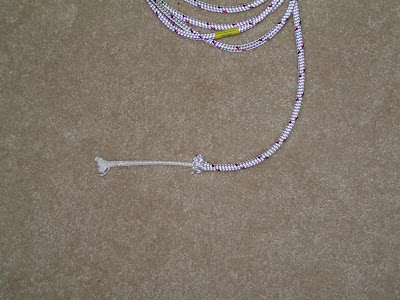Initially, I had planned to use very thin stainless steel wire cable for the tendon, but, after I received my sample order of wire cable, I quickly realized that, in spite of its strength, the steel cable wasn't designed to handle sharp bends around small pulleys. In my search for an alternative, I found a master's thesis on the internet by Catherine Anderson entitled "The Design of a Compact Actuator System for a Robotic Wrist/hand" that was very helpful. Among the several materials mentioned in this document I was most impressed with an artificial fiber called Spectra. Spectra is an Ultra-High Molecular Weight Polyethelene that's available at a relatively low cost. According to Catherine's thesis, the only potential issues with Spectra is its tendency to have high "creep" under extreme stress or heat. Given that I am making a robotic tortoise, I don't think there will be many issues with stress or heat.
When I searched for Spectra on the Internet, I mostly found websites that only offered it in the form of thicker ropes. To get an idea of what Spectra fiber was like I decided to order a short length of the thicker Spectra rope from McMaster-Carr. The following set of photographs document my dissection of the rope and the process I followed to reassemble the dissected pieces into thinner cords suitable for use in my robotic tortoise.
 |
| To make cords of the proper thickness, I selected one of the fiber bundles and split it with my fingers into four quarters. |
 |
| The resulting product was a four-foot length of very thin Spectra cord. |




No comments:
Post a Comment
Note: Only a member of this blog may post a comment.